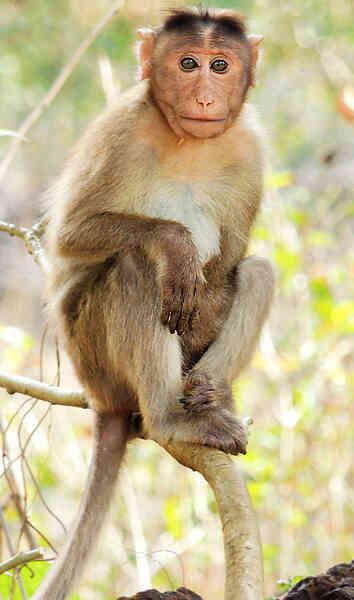Monkeys are a type of primate widely distributed around the world, with diverse species and living habits. The following is detailed information about monkeys and an overview of their living habits:

Classification: Monkeys are primates, including Old World monkeys and New World monkeys. They belong to different families, including Monidae, Gibbonidae, etc.
Distribution: Monkeys are widely distributed and mainly live in various ecological environments in Asia, Africa, Central and South America, and other regions. Monkeys can be found from rainforests to grasslands to mountains.
Body size: Monkeys come in various sizes and shapes, ranging from small and exquisite species to tall and powerful species.
Tail: Many monkeys have long tails, but a few species have short or nearly absent tails.
Food habits: Monkeys' food habits are also very diverse, including fruits, leaves, insects, bird eggs, and other small animals.
Behavior: Monkeys are highly social and usually live in groups with strict social structures and status hierarchies.
Tool use: Some studies have shown that many monkeys have simple tool use abilities, such as using sticks to catch insects or stones to open nuts.
Reproduction: Monkeys have strong reproductive capabilities and usually mate during specific seasons of the year. The gestation period is short, and the cubs will grow close to their mothers after birth.
Adaptation to the environment: Monkeys have corresponding adaptability to different environments. Common ones include mountain monkeys and rainforest monkeys.
Natural enemies: Monkeys also have natural enemies in nature, including big cats, large snakes and birds of prey.
In general, monkeys are a very flexible and diverse group of primates. They have demonstrated unique living habits and adaptability to the environment in their respective ecological environments. As social animals, their survival and reproduction depend on complex group relationships. These characteristics make monkeys unique in the animal kingdom.
animal tags: simian
We created this article in conjunction with AI technology, then made sure it was fact-checked and edited by a Animals Top editor.